Photography from Film: Characterization in Film with Rembrandt Light
Talk about the use of Rembrandt light in film and drama program.
Rembrandt’s light form is very complex, which can be roughly divided into two categories: Rembrandt Light and Using Light Like Rembrandt.
Now the Rembrandt light is a unique way of lighting the side light. Its basic light effect is: forming a triangular light spot on the front face of the character, so it is also called triangular light; respectively by: brow bone And the projection of the bridge of the nose, and the dark area of the cheekbones are formed.
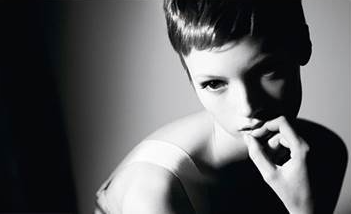
Generally, this kind of lighting is not easy to see in fashion magazines, because compared to the front flat light system that shows details, Rembrandt light is a kind of emotional light, and it is easy to overwhelm guests. After all, fashion magazines are mainly for selling products rather than Selling models, but it is appropriate in film and television works whose main purpose is to shape characters, and there are many derivative forms of expression.
If you flip through the dramas or movies, you will find that the lighting of characters in film and drama program is almost all based on side lighting and backlighting:
“Hunted”

“Hannibal“
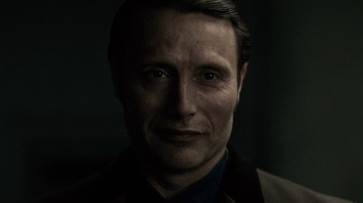
“Troy“
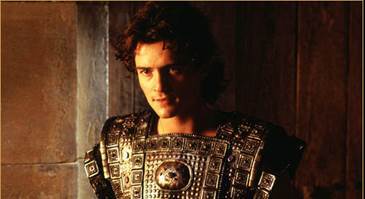
“The Grandmaster”

In order to make the picture appear three-dimensional and emphasize the primary and secondary elements, the film and television works will use the side light system with the contour light to deepen this visual impression. ) in the position of the light source will not produce strong visual guidance effects like foot light or full backlighting (except for ghost movies), so it is generally applicable in most environments.
But when it comes to Rembrandt’s use of light, one can’t help but think of “The Night Watch”, which hints at a turning point in his life.
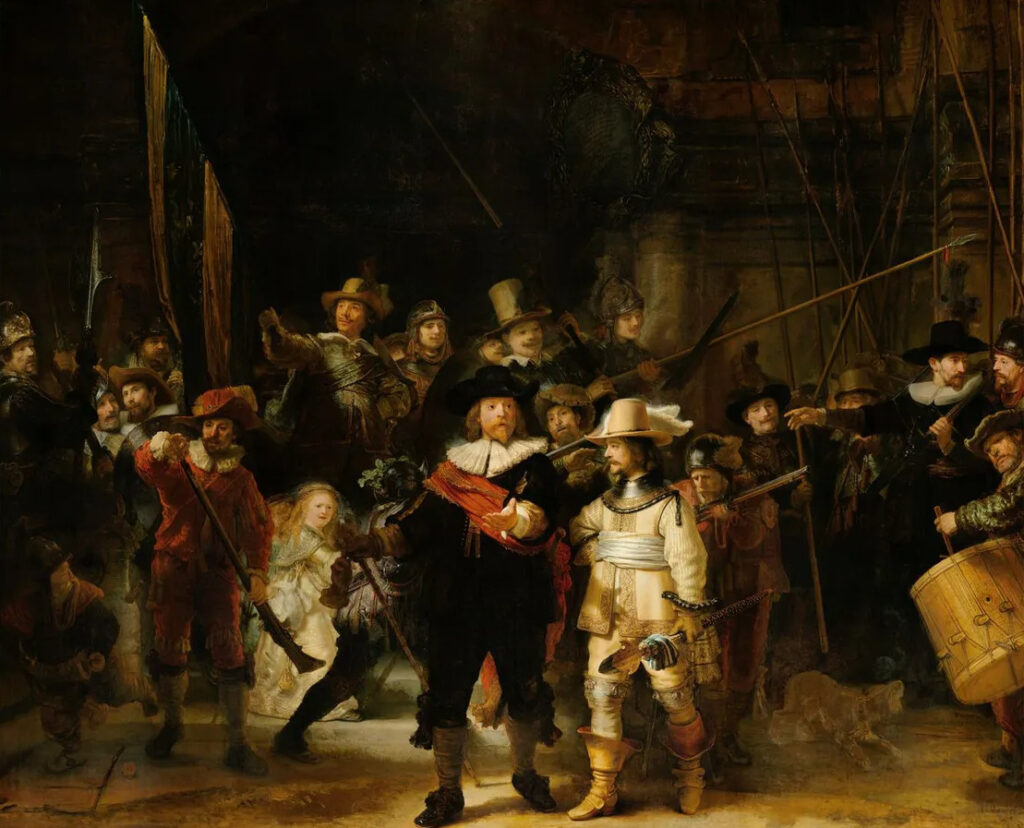
“De Nachtwacht” Rembrandt 1642
Like other masterpieces, “Night Watch” also has a variety of confusing or far-fetched legends. One can easily find secrets that are favored by street stall literature, such as what was identified as a painting in the nineteenth century as a daytime painting, and three times of vandalism in the eighty years.
Of course, professionals are more open-minded. British director Peter Greenaway made a movie of the same name in 2007, interpreting the whole process of the creation of this giant painting into a murder case with an implied power struggle. Lang played the triple roles of detective, prosecutor and judge in this incident, and eventually fell into disrepute and never recovered. The director has absorbed the vitality of a lot of brain hole party members, from the red silk hanging in the painting, the president’s satanized symbol, to the demon’s phallus implied by the team’s deputy holding a double-edged halberd, and the inexplicable appearance of a little girl and other doubts. Then outlining the metaphor of truth contained in it, the birth of this legendary masterpiece is attached with a layer of pessimism and mystery.
In your impression, there is no one who likes to play this kind of literary code stalk than Dan Brown’s “The Da Vinci Code”. In the book, the painting of “The Last Supper” has a naked religious semiotics brain hole, and the conclusion is of course shocking. Big sale.

Of course, a director with a purely British aristocratic style like Greenaway doesn’t like “The Da Vinci Code”. In addition to starring Martin Freeman’s representative broken mouth and gossip, the film is thrilling and suspenseful. There are no commercial elements at all, but the lighting and scenery imitate the style of the oil paintings in the Baroque period. Coupled with the structure like a multi-act stage play, the whole film is like a flowing Rembrandt scroll.
At the beginning of the film, Rembrandt wakes up from a bizarre nightmare, and the camera slowly zooms to a large panorama. At this time, the main light source is a beam of side backlight that is injected into the room from outside the window, and the upper half of the area is in shadow. The upper body of the maid Han Ruikia and Rembrandt sitting in the center of the bed stood out in the light zone. At this time, Rembrandt said a very interesting line:
The red is thick to the touch and is hot, you can tell by touch, the red is tactile. What is yellow? Yellow is thinner than red, more transparent, and will flow. Red is more stable, yellow is always so capricious, yellow can be liquid, like beer.
At the same time, the maid gradually opened the window, the color of the room gradually changed from red to yellow, the sound should match the speed of the change of the picture, creating a subtle sad atmosphere, and what about the image? With incomprehensible, tangible and intangible.

The picture of Rembrandt having breakfast with his family is the first group shot of the film. The technique shown in Rembrandt’s painting is like this.

“The Anatomy Lessons of Doctor Tirp” Rembrandt 1632
And Caravaggio’s treatment of light and shadow style is like this.

“The Invocation of St. Matthew” Caravaggio
Compared with Caravaggio’s treatment of light and dark contrast, the light and dark changes of Rembrandt-style scenes make shadows no longer attached to the form, no longer a means of modeling, but in the conflict between the clarity and obscurity of objects, beyond vision. The feeling itself is integrated into the spirit of the character.
Film Lighting

At the beginning of the Night Watch, a crowd of Dutch militia shooters would come to book a portrait. The film completely complies with Rembrandt’s usual method of dealing with group portraits, using warm light sources to highlight the main characters of the event from the picture, while the rest of the elements are gradually faded away in the dark, and conflicts and plots can be displayed without any trace. The huge blue volume light behind the crowd emphasizes the depth of the picture and makes the characters show silhouettes.The whole picture is full of dreamy and bizarre effects, reflecting the dark and sad tone of the whole film. The narrative style and composition of the story are unified.

Although the film is shot in flashbacks, it adopts a multi-act structure similar to a stage play. Each paragraph is divided according to the three women that Rembrandt met in his life. There is a meaningful dialogue at the beginning. The proportion of bright parts in the middle shot is not large, and the light is no longer from the display, but more subjective imagery, as if emanating from the heart of the characters, which is also the difference between Rembrandt and Caravaggio’s flat light method.
The first dialogue is Rembrandt and his first wife, Saskia, about the combination of the two. Saskia’s aristocratic status gave Rembrandt the capital to become a celebrity, and her cousin is a painting underwriter. , is actually the channel through which Rembrandt sells his paintings.
When his wife was giving birth, Rembrandt squatted on the bed and tried to draw it down, which angered his wife and was driven out. At this time, he saw a little girl who was talking about her, saying that she was an angel who gave birth. After several conversations, Rembrandt came to understand that this girl was living in an orphanage and was probably the illegitimate daughter of the head of the Sagittarius Guild. Not long afterward, the guild leader was accidentally injured and died by his teammates during a routine training of the guild. At this time, the painter became aware of the conspiracy behind the incident.

The lighting here is equally wonderful. The main light source in the front left gives the classic Rembrandt light on the faces of the two, while the contour light in the rear right also increases the depth of field of the lens. There are hidden buildings in the dark, but the layers are rich in detail. , the subtleties of the characters are highlighted, neither swallowed by the darkness, nor independent of other elements of the picture, the so-called Rembrandt’s sense of ablation with light seems to be easily brought out.

Saskia’s death dealt a heavy blow to the painter, and then her cousin broke with the painter after discovering Rembrandt’s deviant performance in the soon-to-be-completed “Night Watch”.
At this time, it is like a cold version of “Dr. Thirp’s Anatomy Lesson” presented in front of the eyes. The pale dead person is the brightest part of the whole picture, and the background is illuminated by a bunch of cold light sources, which makes the whole composition appear in depth and provides an outline at the same time. Light, the whole picture is full of solemnity. The sudden change of color temperature at this time indicates the sudden change of the subsequent plot. Everything is hidden in the cold light, and despair also pervades.
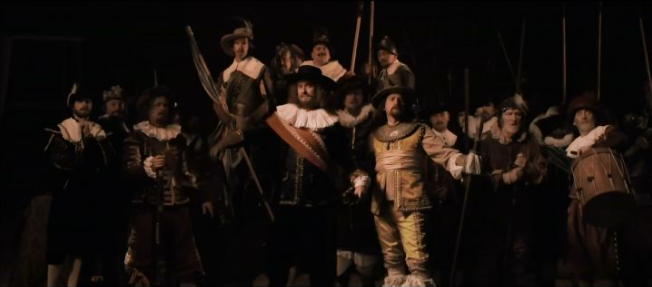
At the end of the film, at the delivery ceremony of “Night Watch”, the painter accused the vice president of murdering the president together with the others, and was retaliated by everyone.
Later, the director felt that the discussion was not sufficient, and in the second year, he made a documentary film “Rembrandt’s “I Complaint”, which analyzed 34 doubtful points in the painting, and tried his best to interpret it. , that’s another story.
Although later generations have many interpretations of the ups and downs of Rembrandt’s life, it is an indisputable fact that he became rich and poor in his later years. In 1661, Rembrandt created a large painting “De samenzwerinq van Julius Civilis” (De samenzwerinq van Julius Civilis) for the New Amsterdam City Hall. The painting was shelved. But who would have thought that hundreds of years later, Hollywood has a large group of lighting engineers using Rembrandt’s light processing.

